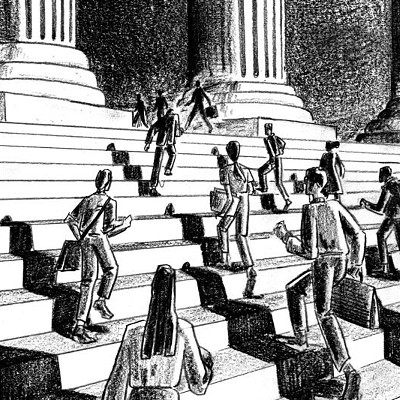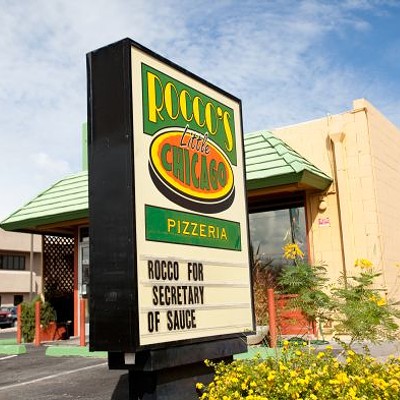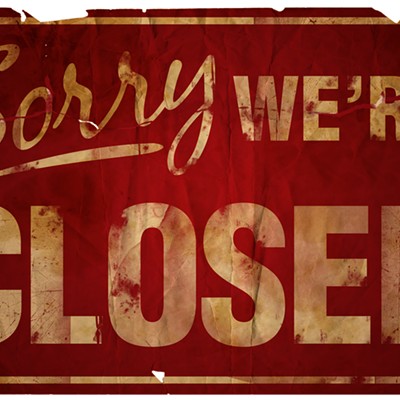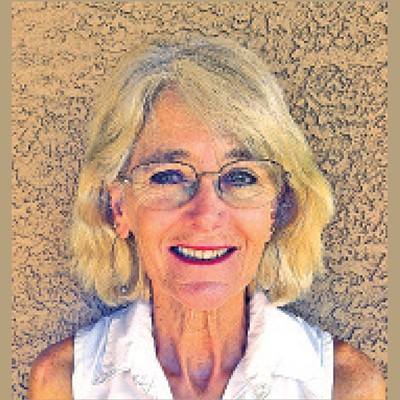If one can ride a bike with swagger, I surely did. I jumped every curb, caught air off of every hump in the road, and cut across every vacant lot in search of new terrain to terrorize. On the front of my BMX number plate, attached to my handlebars with zip ties, a sticker I'd bought at a bike shop told the world my existential motto: "Many Have Tried, Many Have Died."
Sometimes I'd join a pack of other boys my age, and we'd ride through town like a dusty gang of outlaws, easy in the saddle, serious and hard and confident, looking for trouble--or at least an old piece of plywood and a few concrete blocks with which to fashion a death-jump.
That little bike bandit was soon gone, though, replaced by a lesser man who was always worried about how his hair looked and how to get money to fill up his Datsun 610. It was the late 1980s, and $10 would do it, so I rarely looked back to lament what I had lost.
Now, 20 years on, $10 doesn't fill up much of anything--so I'm back on the bike.
Thousands preceded me onto their bikes, of course--people who didn't wait for $4 per gallon to change their behavior and give in to an inevitability. I'm slouching toward 40 at a time when Americans are driving less, as numerous polls and studies have indicated over the last several months. This monumental change hasn't necessarily led to a biking revolution yet, though there are signs that the trend is headed that way. The positive public health effects, and the environmental and economic implications of bike-riding, are obvious and well-known, and I feel better physically and mentally than I have in a long time.
But really, all I want to do is race every other rider I encounter on the flat streets of Tucson.
It is a great joy to find evidence that you haven't fundamentally changed since you were a kid. I ride the backstreets through the neighborhoods, the better to find speed humps off of which to catch air and cross-up. Often I'll catch myself making long, slow slalom-like zigzags through the empty streets, daydreaming about what's going on inside the silent red-brick bungalows of midtown. Even the slight inclines are enough to lead to what I believe is one of the greatest visceral experiences a body can access: that gorgeous letting-go relief you feel when you begin to coast downhill after even the shortest climb. There's nothing like it, and every time it happens, I feel young and free again. When was the last time you felt young and free inside your car?
The great majority of the car trips we make are within 6 miles or so of our homes. When I was 11, I'd think nothing of riding 10 miles just to reach a standing-water mud pond I'd been meaning to tear through, sending a cool stream of brown water up my spine. The least I can do now is pedal a few miles to the store to pick up supplies. A bike-messenger bag is usually big enough to carry the makings of dinner for me and mine, including a six-pack. You can't always do jumps with dinner on your back, but there's a time and place for everything.
Other recent polls reveal that most Americans believe $4 or more for a gallon of regular is a reality that's not likely to change. This could be that epochal shift that we've been hearing about for decades from cranks and survivalists: the inevitable decline of growth for its own sake. We are in it now, and there's no turning back. Well, that may be true, but it also may turn out, as the physicist and futurist Freeman Dyson wrote recently, that we will have "genetically engineered carbon-eating trees" and other world-saving, economy-boosting scientific wonders "within 20 years, and almost certainly within 50 years."
Truthfully, I find myself caring less and less about the rise and fall of civilizations, the whims of global warming, the price of corn and the survival of the fittest. I'm having too much fun on my bike.










